Floral Foam – The Impact on our Environment
The issue of floral foam is one of much interest at the moment. Despite the fact that it has been manufactured for around 60 years, very little is known about floral foam and how it might impact the natural environment.
What we do know about floral foam is that it is plastic and as a result of the way it is used, it makes contact with the natural environment. This happens when water containing foam is poured down a drain, the foam is discarded into a garden or soil, mixed with green waste or buried on top of a coffin.
Plastic in the natural environment is a huge problem and scientists are desperately calling on consumers to reduce our dependence on plastic wherever possible. Once in the environment, plastic begins to break down; first into small pieces, and then eventually into microscopic fragments that can take hundreds, if not thousands of years, to completely revert into elements found in nature.
This Q & A has been prepared to help improve consumer understanding of floral foam and the associated issues.
What is floral foam?
Anybody who has worked in the flower industry will be familiar with the magical, green, water-absorbing blocks used to create flower arrangements.
First developed in the 1950s by Smithers-Oasis, floral foam soon became established as an essential tool in modern floral design.
Floral foam is a remarkable product of great convenience. Not only does it hold up to 50 times its weight in water, it is able to support a flower or foliage stem in a desired position. It can be easily cut and shaped to fit into a container and it is cheap to purchase, especially when compared with the cost of fresh flowers.
These features of floral foam enabled floral design to move in extraordinary directions as the process of arranging became simpler and faster, as well as allowing for more complicated design. Before the invention of floral foam, florists did their arranging straight into vases or pots of water, using chicken wire or metal pins under the water line to secure the stems in place.
What type of material is floral foam made from?
Floral foam is a type of plastic that is different to other families of plastics found in packaging and more familiar manufacturing.
The most closely related product is a type of house insulation foam, but other plastics in this family include bakelite and the very hard resin found in billiard balls. All these plastics belong to a group known as phenolic resins, or phenol formaldehydes. These were the very first plastics to be developed in the early 1900s.
How does floral foam work?
Looking under a microscope, the structure of floral foam is very much like honeycomb, with spaces between the connecting chambers that allow water to move through the material. Floral foam is also very similar to the cellular structure in a plant’s stem.
Foam works by effectively becoming an extension of the flower’s stem. Before being cut, a plant receives water through the roots. However, when a stem is cut, water moves directly into the plant’s water vessels at the point where the cut has been made. This water is “pulled” up the stem by the action of water evaporating from the surface of leaves and the stem. Without water, the flower cannot open properly and will wilt and die.
This movement of water into a flower’s stem happens when a freshly cut stem is placed in a vessel of clean water, without foam. When the stem is placed in foam, the movement of water happens first through the foam and then into the stem.
Fig. 1: Cross section of a plant stem showing the bundles of water vessels (in red)
Fig. 2: Water movement (in red) through the foam and into the plant’s stem
The foam offers the added function of holding the stem in place. Although various claims are made about foam extending the life of flowers, one study concluded that cut roses last longer in a vase of water than in floral foam13.
Re-cutting a bunch of flowers and changing the water once or twice during the bunch’s vase life is a simple, chemical free way to prolong flower life. This action helps the stem to continuously take up water by keeping the water vessels open and preventing the build-up of bacteria which causes the vessels to become blocked.
Is floral foam biodegradable?
Phenolic resin floral foam is not biodegradable.
Biodegradability is the ability of a product to decompose as a result of microorganisms such as bacteria and fungi. These organisms use the product as an energy source and break it down into simple compounds. The term ‘biodegradable’ is often associated with a substance being environmentally friendly. However, biodegradable products do not necessarily behave in the same way in all conditions.
Plastics are typically not biodegradable, but they will eventually (over hundreds or thousands of years) break down or ‘degrade’ under other influences such as light, friction, heat or interactions with other chemicals in the environment1. This process usually involves the material fragmenting into smaller and smaller pieces first. Once they are smaller than 5 millimetres in size, they are commonly referred to as microplastics2.
Because floral foam does not dissolve in water (it just breaks into smaller and smaller pieces), it must go through a process of degradation to break down. This can only go on at the surface of the plastic material. Floral foam already has a very large surface area where degradation can occur, even as a complete block, because of its cellular structure. However, while crumbling it into smaller pieces may help speed up the process, there is a downside because the microplastics are more easily dispersed in the environment where they can cause problems. The microplastics can cause physical blockages or irritation in small organisms and because of their high surface area, they can carry other chemicals along with them and ‘deliver’ them to sensitive organisms3.
What is floral foam with ‘Enhanced Biodegradability’/Bio Foam?
Manufacturers Smithers Oasis have released a new line of foam with ‘enhanced biodegradability’ or Maxlife Enhanced Bio Floral Foam6. However, this product does not meet US Federal Trade Commission requirements to be certified ‘Biodegradable’5, nor is there any indication that it has been tested to Australia Standards for Biodegradable Plastic15.
Bio Floral Foam is a phenol formaldehyde-based foam, with an additive to attract microbes. A recent study about the impacts of floral foam on aquatic animals demonstrated that the Bio Foam is almost identical in chemical composition to regular floral foam16. The study also showed that the material was eaten by aquatic animals with a range of feeding habits and leaches more toxic compounds into the water than regular foam.
The problem with different types of biodegradable plastics in the marine environment is that they rarely encounter the conditions they need to degrade. A United Nations Environment Programme (UNEP) report states, “biodegradable plastics in the marine environment will behave quite differently than in a terrestrial setting (soil, landfill, composter) as the conditions required for rapid biodegradation are unlikely to occur”14.
Bio Foam is designed to break down in landfill, not in composting conditions or in aquatic environments. Marketing information about the Bio Foam product states that: “the enhanced foam formulation is designed for modern landfills and attracts microbes that break the foam down into methane, CO2 and organic matter”. There is no further information about the ‘organic matter’ that remains after biodegradation has taken place5.
The laboratory test conditions used to assess the Bio Floral Foam’s ability to biodegrade simulate an optimised landfill environment: free from oxygen, maintained at a constant temperature of around 50 degrees Celsius and in the presence of bacteria that thrive in an oxygen-free environment.
Although marketing information for this product produced for the US claims ‘100% biodegradability”5, a footnote in an Australian 2018 press release for Bio Floral Foam suggests that the foam has not been shown to biodegrade completely, even in landfill conditions: “The product has been shown by ASTM D5511 to biodegrade 51.5% within 365 days in biologically active landfill conditions. Appropriate facilities may not exist in your area. The rate and extent shown do not mean that the product will continue to decompose.” 4
Is floral foam toxic?
Floral foam is made from two chemicals considered to be hazardous to humans: phenol and formaldehyde.
These substances are mixed with non-hazardous substances to produce the final product.
The final product is not considered to be particularly toxic to humans under normal conditions of use, because the toxic components are at such low concentrations.
However, a recent study showed that a range of aquatic animals consume floral foam16.
The same study also showed that toxic phenols can leach out of the floral foam and into the surrounding water. Both consuming foam and being exposed to water surrounding floral foam particles was shown to cause harm to aquatic animals 16 .
How should floral foam be handled?
According to an Australian-issued Oasis Floral Foam Safety Data Sheet dated 30th August 20197, the following advice is provided to users:
- Handle in accordance with good hygiene and safety procedures.
- No special requirements are required for storage.
- No special requirements for hand, eye, skin or respiratory protection.
How should users dispose of used floral foam?
According to an Australian-issued Oasis Floral Foam Safety Data Sheet dated 30th August 20197, the following advice is provided to users:
- Dispose in accordance with local regulations
However, according to the EPA in Victoria, there are no guidelines for the disposal of floral foam. Based on general disposal processes for plastic that is not recyclable or biodegradable:
- All product should be sent to landfill-bound rubbish.
- Floral foam should not be placed in the compost, garden or in the natural environment.
- Water containing foam fragments should never be poured down the sink or into storm water.
While a percentage of the solid matter poured down the sink will be captured through sewage processing, the reclaimed solid material from sewage treatment plants is often then used to fertilise farmland9, 11. This action re-releases the plastic particles back into the environment where they can once again make their way into rivers and streams. Those particles in sewage not captured with solids will be released into the ocean with the post-treatment wastewater10.
Pouring wastewater containing plastic foam fragments directly into stormwater (in gutters and drains by the side of the road) is the same as pouring it straight into the natural environment. Water here moves to the nearest river or creek and eventually makes its way to the ocean.
The best practice for disposing of floral foam water is to pour it through a tight weave fabric such as an old pillowcase to capture as many of the foam fragments as possible. At this point in our understanding of microplastic and its impact on the natural world, best environmental practice would see this strained water poured into a hole in the ground or a garden, but never the water system12. However, it is important to remember that those plastic fragments will remain in that hole for an indefinite period of time.
So what’s the problem?
MOST IMPORTANTLY floral foam is a petrochemical derived plastic product that is non-biodegradable. Wherever its final resting place may be, the plastic may exist for hundreds or many thousands of years and may be eaten by animals. This final place of disposal might be underground on top of a coffin, adding to mountains of landfill, or contributing to the microplastic issue in aquatic environments where they can enter the food chain at various points through ingestion by aquatic animals 3 .
There is almost no information available for consumers at the point of sale or with packaging to advise users on how to handle and dispose of the foam, or to explain what it is. The lack of information about the product and its widespread availability (hardwares, gift shops, fabric stores) has led to mishandling of the product and abuse as a toy with the globally popular trend of crushing floral foam, often with glitter, for the purposes of an Autonomous Sensory Meridian Response (tingling feelings on the scalp and back) and social media fame. As observed on the thousands of videos available under the #floralfoam, this is often done directly into the sink or into water.
How do we reduce the impact of Floral Foam at work and how do we educate customers to do the same at home? Join the conversation. Comment below!
REFERENCES:
- Andrady A.L. (2015) Persistence of Plastic Litter in the Oceans. In: Bergmann M., Gutow L., Klages M. (eds) Marine Anthropogenic Litter. Springer, Cham https://link.springer.com/chapter/10.1007/978-3-319-16510-3_3
- Arthur, C., J. Baker and H. Bamford (eds). 2009. Proceedings of the International Research Workshop on the Occurrence, Effects and Fate of Microplastic Marine Debris. Sept 9-11, 2008. NOAA Technical Memorandum NOS-OR&R-30.
- Matthew Cole, Pennie Lindeque, Elaine Fileman, Claudia Halsband, Rhys Goodhead, Julian Moger, and Tamara S. Galloway (2013). Microplastic Ingestion by Zooplankton. Environmental Science & Technology 2013 47 (12), 6646-6655DOI: 10.1021/es400663f https://pubs.acs.org/doi/10.1021/es400663f
- https://oasisfloral.com.au/2018/08/14/oasis-bio-floral-foam-maxlife-pressrelease/
- https://oasisfloralproducts.com/ctemplate1.aspx?page=App_Themes/default/html/MaxLife_FAQs_en-US.html
- https://oasisfloral.com.au/wp-content/uploads/2019/09/OASIS-Maxlife-Enhanced-Bio-Floral-Foam-AUS-ENG-30.8.19.pdf
- https://oasisfloral.com.au/wp-content/uploads/2019/09/OASIS-Classic-Floral-Foam-AUS-ENG-30.8.2019.pdf
- https://docs.wixstatic.com/ugd/898205_195723f870af4af5babdd47c476f79d2.pdf SECTION 8 via oasisfloral.com.au/material-safety-data-sheets
- Ee-Ling Ng; Esperanza Huerta Lwanga; Simon M. Eldridge; Priscilla Johnston; Hang-Wei Hu; Violette Geissen; Deli Chen. An overview of microplastic and nanoplastic pollution in agroecosystems. Science of The Total Environment, ISSN: 0048-9697, Vol: 627, Page: 1377-1388. 2018. https://www.sciencedirect.com/science/article/pii/S0048969718303838
- Sherri A. Mason, Danielle Garneau, Rebecca Sutton, Yvonne Chu, Karyn Ehmann, Jason Barnes, Parker Fink, Daniel Papazissimos, Darrin L. Rogers, Microplastic pollution is widely detected in US municipal wastewater treatment plant effluent, Environmental Pollution, Volume 218, 2016,Pages 1045-1054, ISSN 0269-7491, https://doi.org/10.1016/j.envpol.2016.08.056. http://www.sciencedirect.com/science/article/pii/S0269749116309629
- Microplastics impacting wastewater treatment processes http://www.awa.asn.au/AWA_MBRR/Publications/Latest_News/Microplastics_impacting_wastewater_treatment_processes.aspx
- Chelsea M. Rochman, Sara M. Kross, Jonathan B. Armstrong, Michael T. Bogan, Emily S. Darling, Stephanie J. Green, Ashley R. Smyth, and Diogo Veríssimo. Scientific Evidence Supports a Ban on Microbeads Environmental Science & Technology 2015 49 (18), 10759-10761 DOI: 10.1021/acs.est.5b03909 https://pubs.acs.org/doi/10.1021/acs.est.5b03909
- Ahmad, John M. Dole, Erin M. R. Clark & Frank A. Blazich (2014) Floral foam and/or conventional or organic preservatives affect the vase-life and quality of cut rose (Rosa × hybrida L.) stems, The Journal of Horticultural Science and Biotechnology, 89:1, 41-46, DOI: 10.1080/14620316.2014.11513046
- UNEP (2015) Biodegradable Plastics and Marine Litter. Misconceptions, concerns and impacts on marine environments. United Nations Environment Programme (UNEP), Nairobi.
- https://www.standards.org.au/standards-catalogue/sa-snz/manufacturing/ev-017/as–4736-2006
- C. Trestrail, M. Walpitagama,C. Hedges, et al., Foaming at the mouth: Ingestion of floral foam microplastics by aquatic animals, Science of the Total Environment, https://doi.org/10.1016/j.scitotenv.2019.135826
This article was first published on www.sustainablefloristry.org All text, images (unless specified) and illustrations Copyright of the Sustainable Floristry Network 2018.

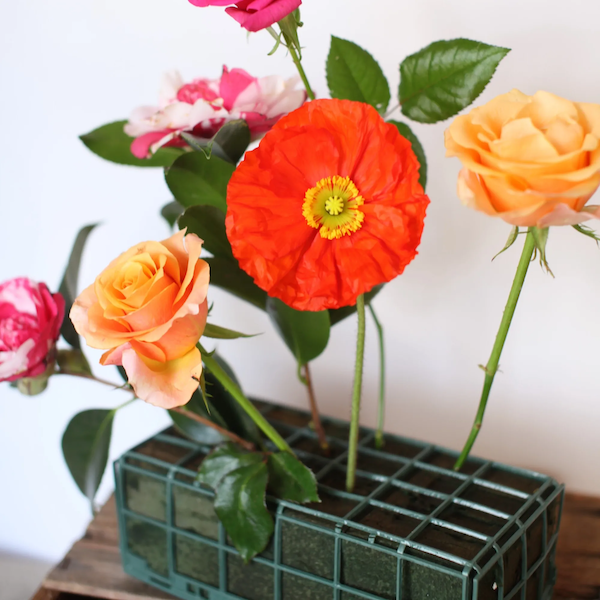

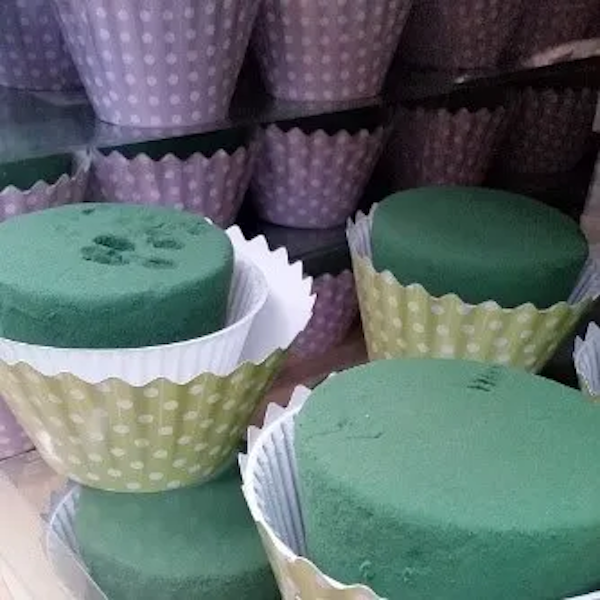
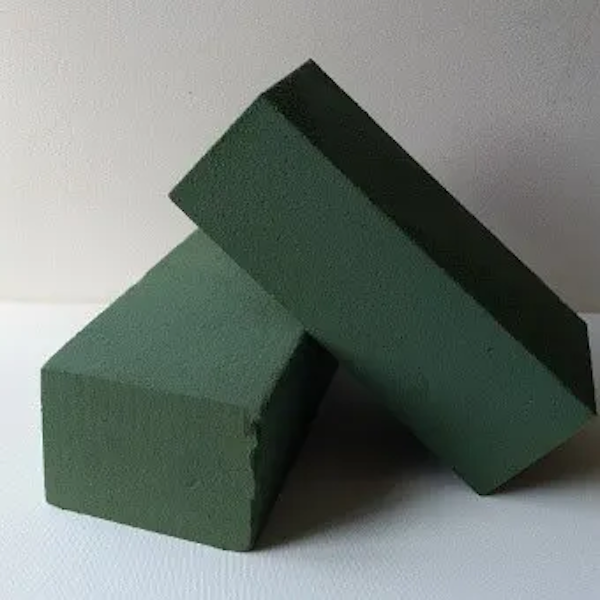




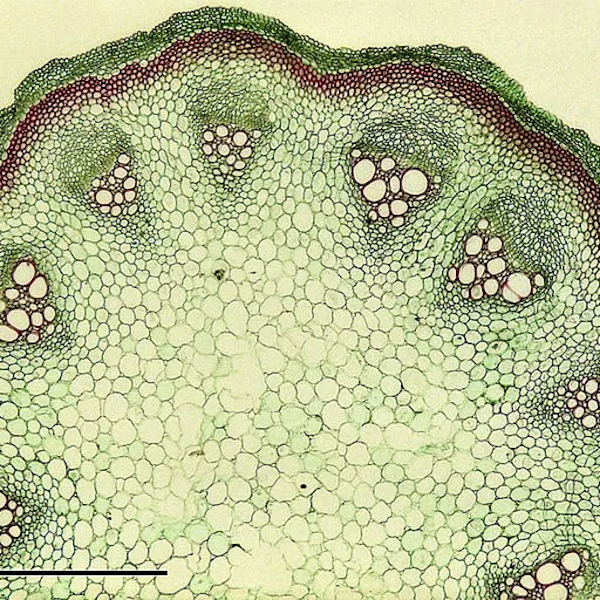


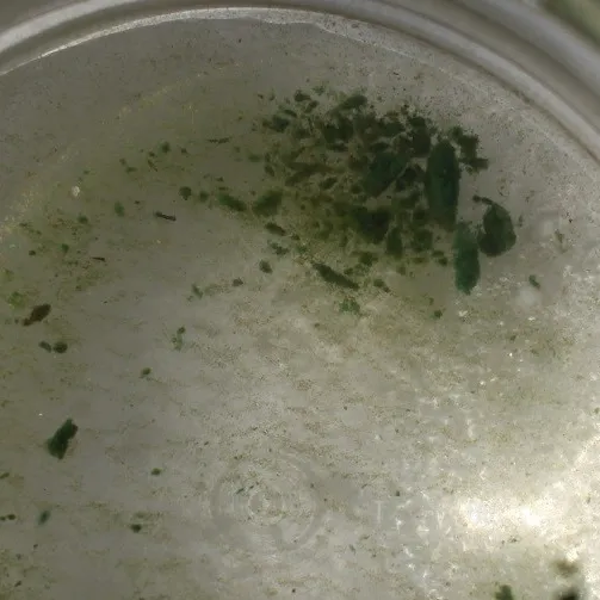
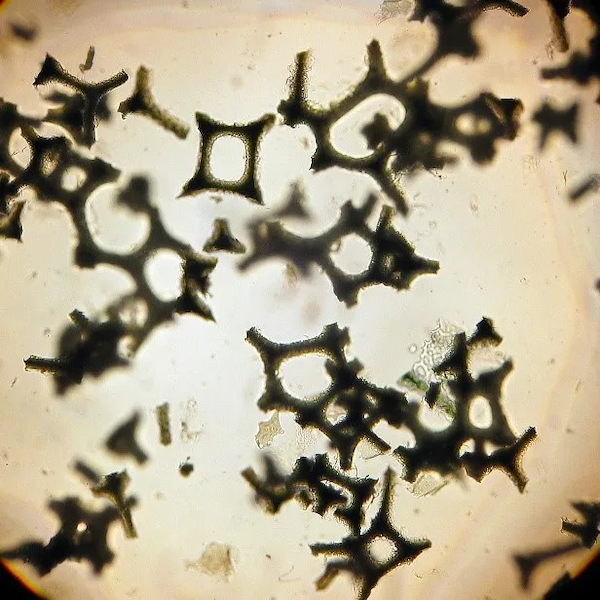

Share this entry